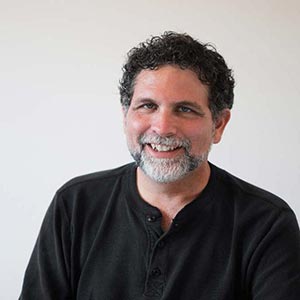Mysticism is most often associated with the lone spiritual adventurer who separates from the world in order to turn his or her gaze inward and unite with the divine. Yet there is also another form of mysticism – a we-mysticism – that is a spiritual journey that can only be accomplished with others.
This We-Mystical union occurs when individuals come together in an elevated inquiry into the sublime. As we collectively turn our attention toward awe-inspiring truths we enter into a state of mutually generated revelation. What is discovered in this experience is a shared inner space that does not exist within us, but between us.
In Ralph Waldo Emerson we find a beautiful description of shared mystical rapture.
Persons themselves acquaint us with the impersonal. In all conversation between two persons, tacit reference is made, as to a third party, to a common nature. That third party or common nature is not social; it is impersonal; is God. And so in groups where debate is earnest, and especially on high questions, the company become aware that the thought rises to an equal level in all bosoms, that all have a spiritual property in what was said, as well as the sayer. They all become wiser than they were. It arches over them like a temple, this unity of thought, in which every heart beats with nobler sense of power and duty, and thinks and acts with unusual solemnity. All are conscious of attaining to a higher self-possession. It shines for all.
The first line, “Persons themselves acquaint us with the impersonal.” tells us that in that miraculous space we find absolute reality through our interaction with others. Engagement at this level initiates a shared experience of consciousness that sweeps everyone into it. Ultimately, this unity of thought arches over us like a temple and animates each and every voice until we become aware that we are vessels of a higher mind that has been born between us. This is what contemporary spiritual teacher Andrew Cohen has described as the birth of a ‘higher we’.
The We-Mystic comes together with other inspired souls in search of a direct experience of divinity that cannot be found in solitude. This ‘higher we’ only exists between people and cannot be experienced through solitary practice. As Cohen puts it:
It is a leap from I to We, from extreme individuation to a living context of intersubjective nonduality—a higher We consciousness in which all parties experience simultaneously their own individual and collective transparency while remaining fully and completely themselves.
Returning to Emerson for a moment, he once described mystical revelation by saying,
I become a transparent eyeball-I am nothing; I see all; the currents of the Universal Being circulate through me-I am part or particle of God.
Inserting ‘we’ for ‘I’ in Emerson’s beautiful sentence gives us a sense of the difference between mysticism and we-mysticism.
We become a transparent eyeball-We are nothing; we see all; the currents of the Universal Being circulate through us-we are part or particle of God.
In an earlier post I mentioned William James’ four characteristics of mystical experience – ineffability, noetic quality, transiency and passivity. To these I would like to add two other characteristics that distinguish a we-mystical from a mystical experience.
The first characteristic exclusive to we-mysticism is collective transparency. Initially when individuals come together they are opaque to each other. You see the outer surface but the inner workings of mind and spirit are only revealed through evidences of word and deed. In the we-mystical experience the surfaces that separates us become transparent. We begin to see into and through each other. As this happens we let go of the sense of being separate and become aware that the intelligence animating the others is also animating our own thoughts, feelings, words and deeds. Together we have become a collective being – a higher we – that has an experience of consciousness that is dependent upon, and yet independent from the individuated self sense. It is a ‘new being.’
The awakening of the ‘higher we’ leads to a second characteristic of we-mysticism – spiritual interdependency. Because the heights of awareness that open up to us in the we-mystical state are only revealed between individuals, they ignite a sense of shared responsibility and obligation for that profound consciousness. We realize that access to that higher mind does not belong to any individual. It is the property of the space of relatedness between all the individuals. This recognition brings with it a sense of sacred obligation to each other. We know that we must do whatever we need so that we can play our part in keeping the miraculous portal to the divine open. And simultaneously we feel the vulnerable dependency that comes from knowing that the others must also do their part to maintain access to this ‘new being’. The emergence of this sense of spiritual interdependency has called this ‘higher we’ experience, the antidote to post-modern narcissism. In it we discover that at the deepest levels we were never truly seperate and that even the consciousness we hold is common property.
